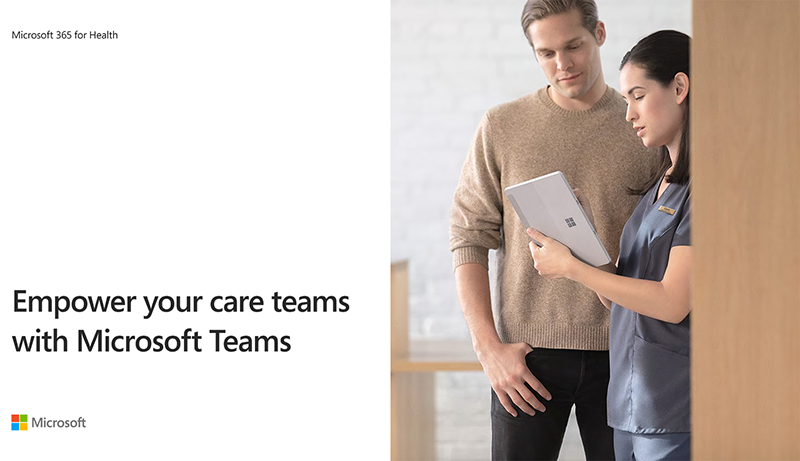
How modern collaboration tools enhance patient outcomes across healthcare
Over the past year, I’ve spent countless hours talking with clinicians about the challenges they face in delivering safe, high-quality, compassionate care for patients. One of the things I hear from them repeatedly is how they’re hindered by fractured systems and tools.
Clinicians need a modern workplace that empowers them to easily communicate and collaborate across the care team. This solution should streamline the handoff of information, helping to improve patient outcomes, saving time and money. To work for them, it needs to do all of this on a secure, trusted foundation that helps enable their compliance.
That’s why I’m so passionate about the work we’re doing with Microsoft Teams to empower those in healthcare to connect with the people and information they need. Teams is a digital workspace that centralizes chats, meetings, calls, files, and tools in one place to meet all your healthcare team’s needs. Teams can bring together care teams and information from siloed operational systems, such as line of business apps and electronic health records, enabling clinicians to collaborate in real-time around patient information—all in one secure hub that minimizes switching between apps and tools.
To see how Teams can empower your care team, read our new e-book.
Helping our customers improve patient outcomes
Today, more than 500,000 organizations, including 91 of the Fortune 100 and many of the most innovative healthcare providers, are empowering their employees with Microsoft 365 and Teams. For example, St. Luke’s is turning to Teams to provide a secure way for their clinicians to connect and share information quickly, so that they can focus more time on patient care.
“Clinicians are naturally collaborative and communicating quickly in a ‘digital huddle’ will expedite their decisions on treatment protocols, improving health outcomes for patients. Thanks to the unified interface, clinicians will spend less time navigating different systems and more time with their patients. This will also simplify the transfer of patient data between caregivers on different shifts.”
—Chad Brisendine, CIO at St. Luke’s University Health Network
Northumberland, Tyne, and Wear NHS Foundation Trust (NTW) in the United Kingdom has used the meetings capabilities in Teams to enable clinicians to boost productivity and collaboration for their medical staff. With Teams, ward staff can chat with remote specialist nurses and schedule video meetings to conduct virtual wound care consults. This has not only reduced the travel costs and times for the specialist nurses but has also saved the ward staff time to receive, consult, and deliver appropriate treatment for patients.
Enabling secure patient care
This year, we added new secure messaging capabilities to Teams, including priority notifications and message delegation, as well as a smart camera with image annotation and secure sharing, so images stay in Teams and are not auto-stored to the care providers’ devices. To learn more about how Microsoft security controls can help customers with HIPAA and HITRUST compliance, read this recently commissioned white paper from HIPAA One.
Teams also enables the interoperability of electronic health records and other health data—all of which will help care teams to securely coordinate patient care. Leading interoperability partners continue to build the ability to integrate FHIR-enabled electronic health records (EHR) data with Teams. With FHIR integration into Teams, clinical workers can securely access patient records, chat with other team members, and even have modern meeting experiences, all without having to switch between apps. This week, we are announcing the availability of a new EHR Interoperability Partner, Enovacom, a subsidiary of Orange Business Services.
Learn more
Check out the Microsoft 365 for health page to learn more about how Microsoft 365 and Teams can empower your healthcare professionals in a modern workplace.


